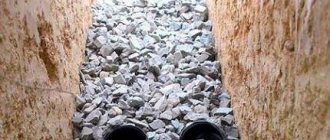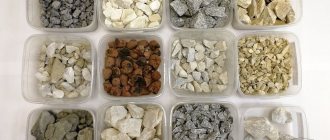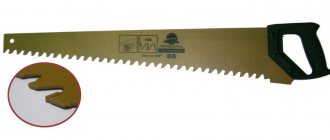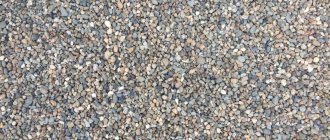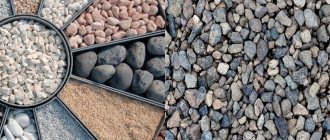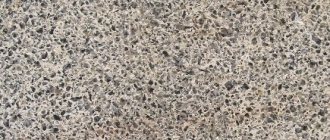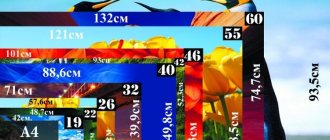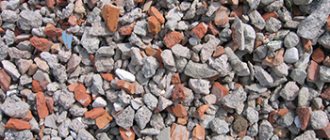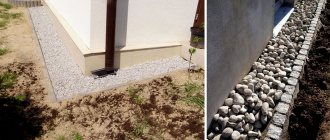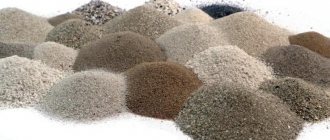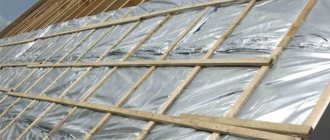Characteristics of crushed stone taking into account flakiness
The classification is based on the percentage of grains with a shape other than cuboid. According to flakiness indicators, types of crushed stone are divided into 5 groups
| Group | Content of lamellar and needle-shaped grains | |
| I | cuboid | to 10 % |
| II | improved | from 10% to 15% |
| III | regular | from 15% to 25% |
| IV | regular | from 25% to 35% |
| V | regular | from 35% to 50% |
Let's take a closer look at each of them: The 1st group includes cube-shaped crushed stone. The content of undesirable elements in it is about 10%. As a rule, such indicators are inherent in high-quality crushed granite stone. This material is considered an ideal option for the manufacture of reinforced concrete concrete and the formation of the top layer of road surfaces. The 2nd group includes crushed stone of improved quality. The content of unwanted grains in it is 10-15%. These parameters are typical for granite crushed stone. Crushed stone, with flakiness characteristics characteristic of groups 1 and 2, is considered the most popular, since it can be used in almost any construction work. The 3rd group includes ordinary crushed stone. The content of irregularly shaped elements in it is 15-25%. Limestone crushed stone may belong to the 3rd flakiness group. The 4th group is represented by crushed stone with conventional processing, which contains from 25 to 35% needle-shaped grains.
Types of crushed stone belonging to the 3rd and 4th groups are used mainly in the glass industry, as well as for the production of cement. Crushed stone of the 3rd and 4th flaky groups does not provide a sufficient level of adhesion. For this reason, it cannot be used for the production of building mixtures and reinforced concrete elements. Moreover, when such crushed stone is used as a filler, it increases the consumption of concrete.
The 5th group includes building crushed stone with a grain content of irregular shape in the amount of 35-50%. Such crushed stone is considered a low-grade material, and therefore is not used as often as other types. Due to low popularity and demand, such crushed stone is rarely found on the construction market. It is mainly used in the construction of temporary buildings or the formation of dirt roads.
Properties of crushed stone: Flakiness
The second article in our series of publications on the properties of crushed stone is devoted to such characteristics as flakiness. It’s worth saying right away that this term has nothing to do with the type of fish of the carp family, but comes from the word bream, which means a flat stick or plank. Flakiness of crushed stone is the most important characteristic that determines the content of needle-shaped and flattened elements in the total mass of product grains, expressed as a percentage. Based on the percentage, the material, in accordance with the standard, is divided into several groups, which we will describe below, but for now we will explain which grain should be called flakier. So, a grain is called flaky if its length is at least three times greater than its width (acicular), or its length is also at least three times greater than its thickness (lamellar).
See how high-quality cube-shaped crushed stone is produced
After reading the information above, a novice specialist will rightly ask: “Is high flakiness good or bad?” Here, in contrast to the crushed stone strength indicator described in the previous article, the answer will be: “The less, the better!” The fact is that high-flake crushed stone is less susceptible to compaction, leaving large gaps between the grains. It is obvious that using such a product, for example, as a filler is not economically profitable. In addition, the strength characteristics of crushed stone with less flakiness are better. Unfortunately, at present it is impossible to obtain exclusively cuboid-shaped material, no matter how modern the equipment used for crushing and screening is, therefore, when classifying products, the presence of horse-shaped grains in the total mass is allowed. By the way, you can learn more about the crushed stone production process by reading our article.
Below is a description of five groups according to the flakiness indicator in accordance with GOST 8267-93:
No more than 10% of grains are needle-shaped and lamellar.
This is the so-called cube-shaped crushed stone, most well processed in the process of crushing and screening. Crushed granite has similar characteristics. Ideal for creating the top layer of road surfaces and in the production of reinforced concrete structures. From 10% to 15%. An improved group, where the grains also have a shape close to cuboid. These flakiness characteristics are inherent in crushed gravel. Products from this group are suitable for almost any construction purpose.
From 15% to 25%. A material with normal flakiness, the middle group, which includes, for example, crushed limestone due to its natural characteristics. The quality characteristics of this group are not as high as those of the previous two, so it is not profitable to use this material to create reinforced concrete structures or in the production of concrete.
From 25% to 35%. Material with similar flakiness indicators also falls into the middle group, but is at its lower limit. The quality of the product in this group does not allow its use in many construction fields. One of its main uses is in the glass industry.
From 35% to 50%. Low-quality crushed stone, the demand for which is very small, although it is cheaper than other groups due to the low cost of its extraction and production. Used in most cases for the construction of temporary buildings and roads.
It is impossible to overestimate the importance of flakiness in various types of construction work. The use of a low-quality product when creating high-traffic roads, such as highways or avenues, will significantly reduce the life of the pavement, which will lead to direct losses. Conversely, it is not economically feasible to use cube-shaped crushed stone for the construction of temporary roads and driveways. Thus, it is important to carefully study all the flakiness groups, weigh the pros and cons, and only then choose the material that is most suitable for a specific type of construction work.
Our company sells high-quality material, so you can purchase products from us exclusively with low flakiness. We offer to buy cube-shaped crushed stone, the price of which is significantly lower than that of competitors. Depending on your requirements, we will arrange delivery by truck or offer to pick up the material yourself. We take a responsible approach to doing our work with the goal of long-term partnership!
How to determine flakiness
To determine the flakiness of crushed stone, there is no need to use a special technique - the study can be done manually. The number of needle-shaped lamellar grains is determined separately for each specific fraction of crushed stone. First, you need to select fractions, and then take measurements using a caliper or a special template. After this, you need to weigh the grains of irregular shape, determining the ratio of their mass to the mass of the sample. The resulting value must be multiplied by 100%, which will result in the indicator of flakiness of the material that interests us. As you can see, this is a simple process, but it takes a lot of time.
Order
- 8-499-380-7-774
Determination of the flakiness of crushed stone
You can determine how many percent of the non-standard fraction is contained in crushed stone without the help of any equipment, manually. It just takes time and care. This is done in 2 stages:
- 1First, using a caliper or a special template, needle-shaped and lamellar (flat) grains are selected from a sample of a specific crushed stone fraction;
- 2Then the selected grains are weighed and the flakiness SI is calculated using the formula:
SI=M1/M2*100% where M1
is the total weight of the sample,
M2
is the weight of selected flat and lamellar grains.
Content of dust and clay particles
Dust and clay particles are considered inclusions whose size does not exceed 0.05 mm. And this indicator indicates the percentage of such particles in crushed stone.
The valid values here are:
- For igneous and metamorphic rocks - up to 1%
- For sedimentary rocks - from 2 to 3% (depending on the strength grade)
- For crushed gravel – from 1 to 3% (depending on the strength grade)
Dust and clay particles (or, more simply, dust) reduce the ability of crushed stone to adhere. In this regard, materials with a high percentage of such inclusions cannot be used for the construction of asphalt roads and as a filler in concrete. It should also be taken into account that dust and clay particles tend to swell upon contact with water. And this ability can affect the change in the mass of crushed stone.
Classification of crushed stone depending on flakiness
It is not possible to crush fossil boulders into grains of the same shape and size. Therefore, in the crushed mass you can find cube-shaped pieces, acute-angled or wedge-shaped figures, as well as flat and needle-shaped pebbles. They are used to determine the flakiness of crushed stone, or rather by their number as a percentage.
The fewer needle-shaped and flattened grains contained in crushed stone, the better quality it is considered, since such inclusions do not allow the material to compact well. Flaky grains are those grains whose thickness and width are three or more times less than their length.
After the crushers, the working mass is fed to screens (a kind of sieves) for sorting into fractions. As a result, it is not possible to completely eliminate unwanted stones, but reducing their number is quite possible. GOST 8267-93 as amended No. 3 dated April 24, 2002. provides for the division of crushed stone into flaky groups:
- No. 1 allows the content of flakier particles up to 10%;
- No. 2 – from 10 to 55%;
- No. 3 – from 15 to 25%;
- No. 4 – from 25 to 35%;
- No. 5 – from 35 to 50%.
By agreement of the parties, it is permitted to produce crushed stone from igneous rock with a high content of flaky and needle-like inclusions, but not higher than 65%.
The characteristics of categories No. 1 and No. 2 are inherent in high-quality processed granite rock. They are considered the most popular. The flakiness of granite crushed stone is very low, so the material is applicable in almost any construction field.
The third and fourth groups are ordinary crushed gravel obtained from softer rocks, for example, limestone. These materials are mainly used in the production of glass and cement.
The 5th category of flakiness is a low-grade product that is in low demand. It is used for the construction of temporary buildings or the organization of dirt roads.
Dividing flakiness into groups allows you to correctly determine the purpose of crushed stone of each category. Thus, for the production of concrete products, regular or reinforced, it is recommended to use crushed stone of the first or second group, in which most of the bulk mass consists of cube-shaped stones. They are endowed with high strength. Whereas the increased flakiness of crushed stone is a threat of creating high voids inside the concrete mixture, which in turn:
- leads to an increase in binder consumption;
- negatively affects the integrity of the structure;
- contributes to poor compaction and the formation of voids and cavities in the concrete body.
